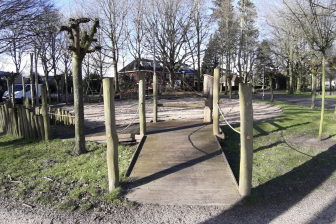
“Legibility and ease of movement”
In this second in our series of interviews ahead of the forthcoming Child in the City international seminar on urban planning and children, keynote speaker Ken Worpole suggests that modern towns and cities need to prioritise pedestrian schemes; a key to enabling the movement and flow that children and young people need to feel that a city belongs to them.
Ken, what in your view defines a child-friendly town or city?
A town or city that children themselves feel belongs to them, as young citizens, and where they are not regarded with suspicion when out and about, whether alone or in groups.
How important is the planning system in either supporting or compromising society’s responsibility for children’s rights?
Two key ingredients of being a child-friendly city are legibility and ease of pedestrian movement. Good planning legibility doesn’t mean lots of signposts, but it means a feeling of natural flow from one place to another, with landmark buildings acting as way stations. Most children and young people – when allowed – are pedestrians (and cyclists), and so pedestrian priority in the modern city is now a must. If the 20th century city was the city of the car, then the 21st city is the city of the pedestrian and the cyclist.

What do you think are the major challenges for urban planners in relation to children and young people?
It’s essentially simple: they explain what they do and why they do it. In the UK we have lost the tradition of locally-based environmental education, in which school-children learn how towns and cities work, what local taxes pay for, how housing relates to transport, what professions and trades are involved in managing and maintaining urban day to day life and so on.
What are the relative merits of some of the different approaches to developing and assessing child-friendly towns and cities?
Like Colin Ward, whose book The Child in the City was so influential I think the best approach is practical – through school visits to town halls, utilities companies, hospitals, traffic engineering departments, police headquarters, to see and understand all the ‘back office’ functions of a working city.
What does your own research suggest should be the priority for policymakers wanting to promote children’s rights in the public realm?
I think we should put environmental and civic education on the national curriculum.
What is your advice to children’s rights advocates aiming to make the case for child-friendly policies in planning and spatial development?
Advocates need to get the politicians on board first. Without political understanding and enthusiasm, it is hard to bring about radical or innovative change.
Ken Worpole was interviewed by Adrian Voce
Photo: Children playing on climbing frames at the adventure playground in Moulsecomb, Brighton, East Sussex. 7th August 1961, by Ken Worpole.
Ken Worpole is Emeritus Professor at The Cities Institute, London Metropolitan University, and the author of many books on architecture, landscape and public policy. He was a member of the UK government’s Urban Green Spaces Task Force, an adviser to the Commission for Architecture and the Built Environment (CABE), and has written much on children’s and young people’s use of the city. Ken and his wife Larraine helped create one of the UK’s first adventure playgrounds, in Brighton in 1966, and they have been active in campaigning for children’s amenities ever since.
His presentation in Rotterdam will look at how spaces only become places when they are invested with multiple experiences and multiple meanings. How can we help children and young people ‘read’ the city and invest its streets, parks and public places with their own experiences?
Urban Planning and Children, a Child in the City international seminar to be held in Rotterdam on 19-20 June 2017. More than fifteen speakers will present their insights and findings on Urban Planning and Children. Visit the conference pages here for more information and details about registration.




